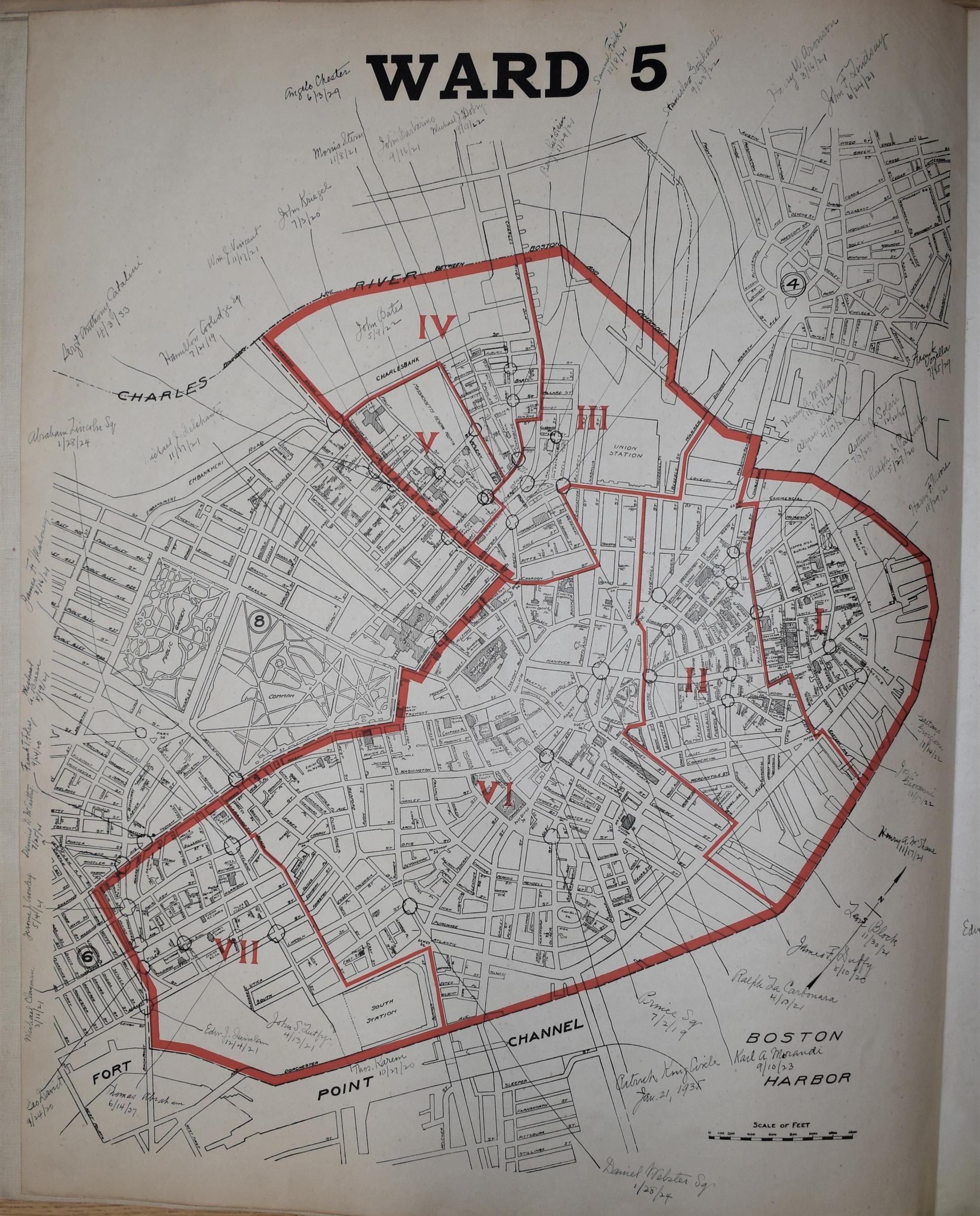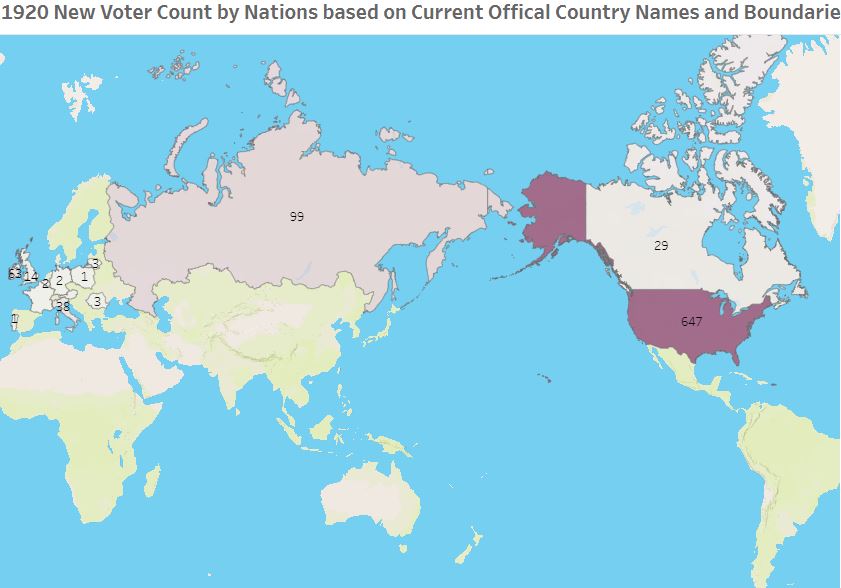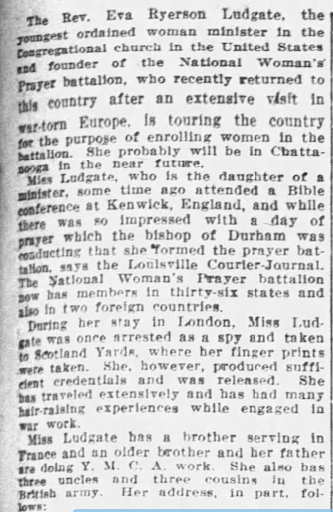The Mary Eliza Project: Ward 5 Voter Records Now Available
In Boston's Ward 5, over 920 women registered to vote in 1920. We’ve finished transcribing our Ward 5 Women’s Voter Registers and the data is now available at Analyze Boston.
In 1920, after the passage of the 19th Amendment, over 50,000 Boston women registered to vote. The 1920 Women's Voter Registers now live at the Boston City Archives and document women's names, addresses, places of birth and occupations. Sometimes women provided additional information about their naturalization process to become a US citizen, including where their husbands were born because in 1920, a woman's citizenship status was tied to her husband's nationality.
The Mary Eliza Project, named after African American nurse, civil rights activist, and Boston voter Mary Eliza Mahoney, is transcribing these valuable handwritten records into an easily searchable and sortable dataset. We've recently finished transcribing the Ward 5 registers and have added them into our dataset!
Ward 5 stretched across portions part of Boston's West End, North End, and South Cove. This diversity of neighborhoods means that Ward 5 women represented a wide variety of ethnicities, occupations, and classes.
One third of Ward 5's women voters were born outside of the United States. By using the the dataset's filters, we can see women of similar national origin living on the same street or in close proximity to each other. For example, Chambers Street was home to 15 Russian born women, while other streets had higher numbers of Irish or Italian voters. While we did find voters seemingly sorting by national origin, we also evidence of connections and commonalities across ethnic boundaries. Irish born Julia McDonald and Russian born Annie Feldman both lived at 212 Chambers Street and both registered to vote. Both women listed their occupation as housewives and though they did not share a native language or culture, they did share the common experiences of emigrating to the United States and running crowded households in the crowded West End.
Ward 5 women worked as clerks, bookkeepers, teachers, telephone operators, housewives, and factory workers, to name only a few occupations. We found over 50 nurses who registered to vote in Ward 5; almost all of them were employed by the nearby Massachusetts General Hospital. Many of these nurses lived in the nurses' residence adjacent to the hospital.
One woman's occupation jumped off of the page at us. Eva Ryerson Ludgate gave her occupation as "Congregational Minister." We decided to dig deeper and uncovered a fascinating story. Newspaper research revealed that Eva Ludgate was indeed an ordained Congregational minister. In fact, one newspaper account claimed that she was the youngest ordained Congregational minister in the United States. Ludgate embarked on her journey to ministry at a young age, recounting that as a child she heard her father, also a Congregational minister, state that "when he was an old man, he hoped to see his daughters in the pulpit proclaiming the gospel."
After her ordination, Ludgate founded the Women’s International Prayer Battalion. During World War I, she traveled to France, the Netherlands, Germany, Scotland, Ireland, and England. She preached and ministered to both military members and civilians, and the Harvard Crimson referred to her as “the most popular woman speaker to troops while in Paris." While in England, Eva's story took an intriguing turn when she was arrested by Scotland Yard on suspicion of espionage!
When Eva returned to the United States, she moved to Boston where she began conducting a mission in the city's First Methodist Episcopal Church in about 1918. By 1920, the year she registered to vote, she was speaking at evangelistic meetings in the Greater Boston area. While we might expect that a female minister would primarily speak to women's groups, the Cambridge Chronicle reported that she was speaking not only to mixed gender of men and women, but specifically to groups of young men.
Eva Ryerson Ludgate's story illustrates the way in which women of the past often break out of the roles and stories that we imagine for them. The 1920 Women's Voter Registers are full of such unexpected stories. Explore the dataset for yourself and start investigating the stories it holds!






